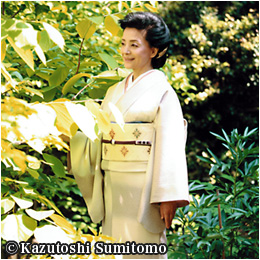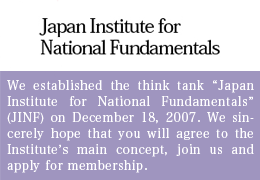CONVERSATION WITH SHINYA NAKAYAMA, 2012 NOBEL LAUREATE IN MEDICINE
During a reception on November 8 in Tokyo marking the third anniversary of the “Genron TV” Internet weekly news show that I host, I had the great pleasure of having a most stimulating conversation with Dr. Shinya Yamanaka—winner of the Nobel Prize in Physiology or Medicine in 2012 for his discovery of iPS (induced pluripotent stem) cells.
We first met the year before Yamanaka won the Nobel Prize in the town of Kobuchizawa in Yamanashi Prefecture during a public forum organized by entrepreneur Yoshito Hori. Asked to discuss issues pertaining to Japanese history with incumbent Prime Minister Shinzo Abe, who then was a member of the opposition Liberal Democratic Party (LDP), we took questions from the floor. One of the questions was from Dr. Yamanaka, who had this to say:
“Those of us majoring in the sciences spend very little time on history or social studies from senior high school on.
“I now continue my research at Kyoto University, while still commuting to a research institute in San Francisco every month to work with a group of international colleagues, including many from China and South Korea. While we usually get along with each other quite well as we work hard together, our relationships tend to become rather awkward on some noteworthy historical occasions, such as the day of Japan’s defeat—the day of victory for them—in the last war. It seems that they have been well schooled in their history, while we have not. That explains why our wires get crossed over important historical issues.”
Asked by Dr. Yamanaka how we should face our own history, I sent him a copy of Grandpa, Tell Me About the Last War, a 2002 best-selling novel by Takanori Nakajo. I was not sure if Dr. Yamanaka would have enough free time to read it. However, when our paths crossed again last spring, I was pleasantly surprised to hear him say he had “read it twice,” adding that he thought it was “an excellent book.”
Thus began my latest conversation with Dr. Yamanaka. One of our main topics of discussion, of course, was recent developments in iPS cell research. He noted:
“It’s still premature to declare that we have reached a stage where diseases can be cured with iPS technology, but it would be safe to say our first goal is definitely in sight. There are two ways to utilize the iPS cells, one of which is regenerative medicine. For instance, Parkinson’s disease and congestive heart failure are both serious ailments that force patients to be bedridden permanently, ultimately threatening their lives, but in both cases the cause of the disease is a single type of cell.
“In the case of Parkinson’s, the normal functions of a handful of special neurons in the more than 200 kinds of cells in the human body are lost with age, causing the disease. As regards heart failure, it also has to do with just one single type of cell. This is the first thing we can do in regenerative medicine—supplant ailing cells with new and healthy iPS cells.”
“Vision and Hard Work”
In September last year, Dr. Masayo Takahashi of the government-funded Institute of Physical and Chemical Research (Japan) performed a successful operation to replace damaged retina cells with new iPS cells—the world’s first such feat. Now, researchers are working hard on laying out a roadmap for the use of iPS cells in other parts of the body. Cancer—the leading cause of death for the Japanese—is among the fields in which such research is moving ahead. Explained Dr. Yamanaka:
“The fear of cancer is considerably less than before due to the introduction of new drugs. However, there are cancers that are inoperable or cannot be cured with chemotherapy. My colleagues are intent on researching treatments designed to rejuvenate immune cells that attack such cancers, proliferate them in large quantities, and replenish the patient’s body with them. We simply cannot afford to keep losing our battle against cancer.”
The application of iPS cells to medicine is progressing rapidly, making competition all the more fierce. In 2006, when he published a report on his successful development of iPS cells using mice, Dr. Yamanaka was unquestionably alone in the field. In just half a year, however, two groups representing Harvard University and the Massachusetts Institute of Technology succeeded in producing similar cells.
“In just a half year, they caught up with what I had spent more than a decade on. In point of fact, within the next year, my group managed to come up with iPS cells using human cells. Just as I was about to get the results published, I was told by a close friend on my visit to the US: ‘Between you and me, I want you to know there are rumors that some American researchers are succeeding in a similar project.’ Greatly alarmed, I wrote a paper on board the flight back to Osaka, sending it to Cell magazine almost as soon as I set foot in Japan. Notified that the magazine carried my report, I took a sigh of relief only to discover that this other group in the US almost simultaneously had its own report published in a different medical magazine. So you see, competition is this fierce in my field.”
As sighs of amazement spread across the hall, Dr. Yamanaka defined as “vision and hard work” the ingredients of his success. As to when he realized that this combination of elements would be key to his future, he pointed to a conversation he had soon after joining the Gladstone Institutes of San Francisco as a postdoctoral fellow in 1993.
Dr. Yamanaka said his boss—Dr. Robert W. Mahley, the honorary director of Gladstone, whom he has come to call “my American father”—said:
“Shinya, I see how hard you work. But tell me what your vision really is. Tell me what you came all the way to the US for with your wife and two little daughters?”
Dr. Yamanaka went on to say: “Queried to that extent, I suddenly came to realize that I was becoming somewhat unsure of what my real goal was at the time, which led me to remember my initial aspiration. In point of fact, I did not decide to quit being a doctor and become a researcher because I was poor at operations. My original vision was to concentrate on research so that I would be able to someday—say, five, ten, or even 20 or more years later—cure an ailment even the most skilled surgeon could not.
“Thanks to my ‘American father,’ I was awakened to this realization.’”
Differences in Support Bases
Dr. Yamanaka remarked that he wants to provide young Japanese researchers in their 20s and 30s the same support and nurturing environment he has been entitled to. He considers this his responsibility as Director of the Center for IPS Cell Research and Application (CIRA) at Kyoto University. He noted:
“It is rather difficult to not crush young people’s ideas. As one becomes more knowledgeable with age, one does see risks more clearly than one’s younger colleagues. Eager to stop them from making mistakes, one often tends not to allow them to take risks. However, it is said that most of the epoch-making discoveries in this world have resulted from projects that postdoctoral fellows and students wanted badly to undertake despite their seniors’ advice not to. Nowadays I make a point of reminding myself of this important fact.”
Dr. Yamanaka’s determination to foster young researchers is evident in his words. However, the support base available in Japan to make his dream come true is vastly smaller than that in the US. He feels that this gap is even wider now than 20 years ago and believes American researchers are much happier than their Japanese counterparts because of the support they are entitled to. This reality in Japan makes him more than a little depressed, he sadly confessed. In the face of this plight our researchers are faced with, our country as a whole must create a framework to support research, with both the government and the private sector contributing to this effort.
Dr. Yamanaka’s exquisite personality added a special feature to our anniversary gathering. Towards the end of the reception, junior and senior high school students from Tokyo’s Shinagawa Women’s School asked him questions centering around how young Japanese today should plan for the future. Dr. Yamanaka replied to each of the questions sincerely, encouraging the younger generation in the crowd:
“I would like for you to have a clear vision and spare no effort to work hard…and to not forget that you owe your success to many people—as in my case.”
I regret being unable to fully introduce Dr. Yamanaka’s impressive remarks in this column, and ask that the reader, if interested, please view the coming “Genron TV” show next Friday (9 p.m., November 13) for the rest of this most engaging and stimulating dialogue.
(Translated from “Renaissance Japan” column no. 680 in the November 19, 2015 issue of The Weekly Shincho)








